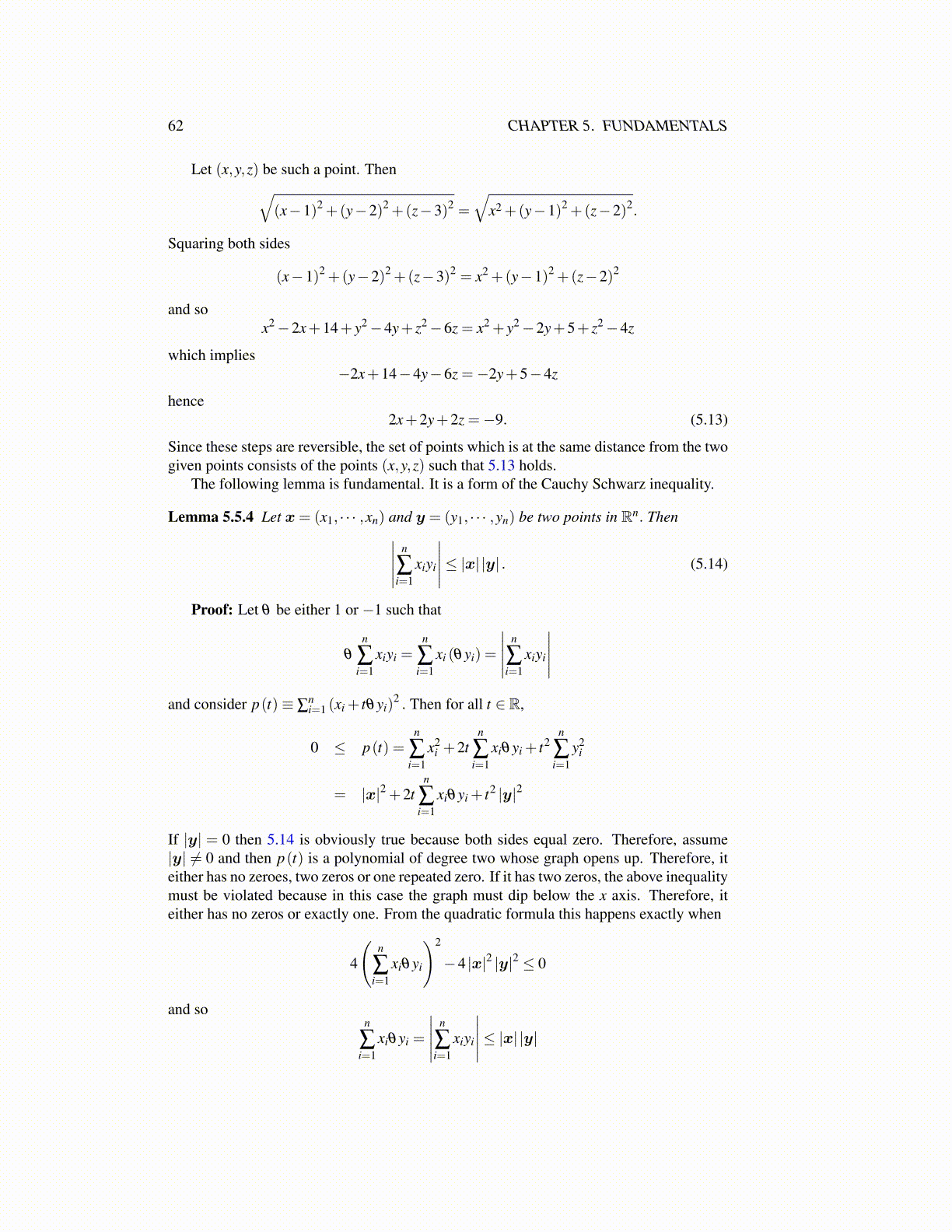
62 CHAPTER 5. FUNDAMENTALS
Let (x,y,z) be such a point. Then√(x−1)2 +(y−2)2 +(z−3)2 =
√x2 +(y−1)2 +(z−2)2.
Squaring both sides
(x−1)2 +(y−2)2 +(z−3)2 = x2 +(y−1)2 +(z−2)2
and sox2−2x+14+ y2−4y+ z2−6z = x2 + y2−2y+5+ z2−4z
which implies−2x+14−4y−6z =−2y+5−4z
hence2x+2y+2z =−9. (5.13)
Since these steps are reversible, the set of points which is at the same distance from the twogiven points consists of the points (x,y,z) such that 5.13 holds.
The following lemma is fundamental. It is a form of the Cauchy Schwarz inequality.
Lemma 5.5.4 Let x= (x1, · · · ,xn) and y = (y1, · · · ,yn) be two points in Rn. Then∣∣∣∣∣ n
∑i=1
xiyi
∣∣∣∣∣≤ |x| |y| . (5.14)
Proof: Let θ be either 1 or −1 such that
θ
n
∑i=1
xiyi =n
∑i=1
xi (θyi) =
∣∣∣∣∣ n
∑i=1
xiyi
∣∣∣∣∣and consider p(t)≡ ∑
ni=1 (xi + tθyi)
2 . Then for all t ∈ R,
0 ≤ p(t) =n
∑i=1
x2i +2t
n
∑i=1
xiθyi + t2n
∑i=1
y2i
= |x|2 +2tn
∑i=1
xiθyi + t2 |y|2
If |y| = 0 then 5.14 is obviously true because both sides equal zero. Therefore, assume|y| ̸= 0 and then p(t) is a polynomial of degree two whose graph opens up. Therefore, iteither has no zeroes, two zeros or one repeated zero. If it has two zeros, the above inequalitymust be violated because in this case the graph must dip below the x axis. Therefore, iteither has no zeros or exactly one. From the quadratic formula this happens exactly when
4
(n
∑i=1
xiθyi
)2
−4 |x|2 |y|2 ≤ 0
and son
∑i=1
xiθyi =
∣∣∣∣∣ n
∑i=1
xiyi
∣∣∣∣∣≤ |x| |y|